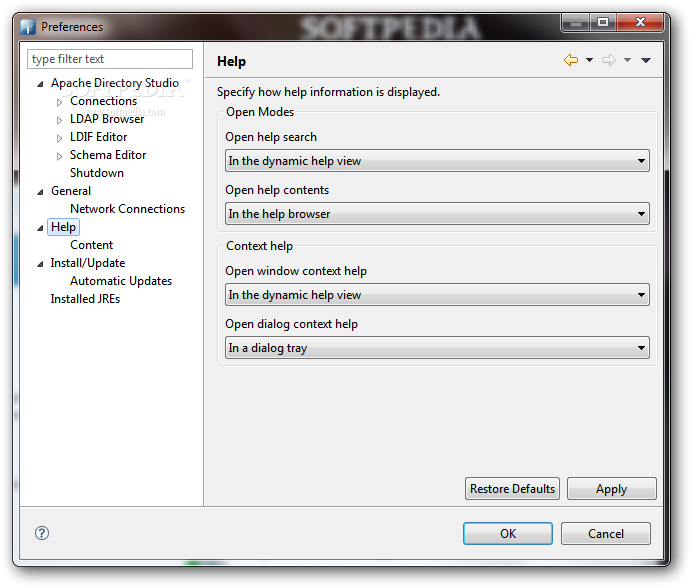

- #APACHE DIRECTORY STUDIO FIX JAVA PATH HOW TO#
- #APACHE DIRECTORY STUDIO FIX JAVA PATH INSTALL#
- #APACHE DIRECTORY STUDIO FIX JAVA PATH UPDATE#
- #APACHE DIRECTORY STUDIO FIX JAVA PATH CODE#
- #APACHE DIRECTORY STUDIO FIX JAVA PATH PASSWORD#
Library/Java/JavaVirtualMachines/jdk1.x.x_xx.jdk/Contents/HomeĪfter adding the JDK, go to the "Project" section (under "Project Settings") on the left-hand side of the Project Structure dialog. The JDK installation directory typically has a structure like this: In the "Add JDK" dialog, locate and select the directory where your JDK is installed. You can see what this looks like from the screenshot above. In the Project Structure dialog, navigate to the "SDKs" section (under "Platform Settings") on the left-hand side.Ĭlick the "+" button on the top right-hand side to add a new JDK. Open IntelliJ IDEA and go to "File" in the menu bar, I am using Ubuntu to demonstrate this. You'll need to point your IntelliJ to the JDK installation directory so that it uses the correct Java version for compilation and execution. The following configurations are some of the things you can do once you have downloaded the IntelliJ IDE. Once you have downloaded IntelliJ as your chosen IDE, you need to configure it to suit your needs. If you are a student of any university, you can get the Github Student Pack.
#APACHE DIRECTORY STUDIO FIX JAVA PATH INSTALL#
Install it, and you will be guided through the setup process, including selecting key plugins and themes. You can download IntelliJ IDEA Community Edition or Ultimate Edition, depending on your requirements. I recommend IntelliJ because of its advanced refactoring tools. There are many popular IDEs for Java development.
#APACHE DIRECTORY STUDIO FIX JAVA PATH CODE#
Choose an Integrated Development Environment (IDE)Īn IDE makes coding simple and gives you various features like code editing, debugging, and project management. This variable is now accessible to Java applications and tools on your system. The command above should display the path to the JDK installation directory that you previously set.Ĭongratulations! You have successfully set the JAVA_HOME environment variable to the JDK installation directory.

To ensure that the JAVA_HOME environment variable is set correctly, open a new terminal or command prompt window and enter the following command: Verify the JAVA_HOME Environment Variable Then you can close the Terminal and you should be all set.

Scroll down and select "Full Disk Access" from the left-hand side.In the System Preferences window, click on "Security & Privacy" and navigate to the "Privacy" tab.
#APACHE DIRECTORY STUDIO FIX JAVA PATH UPDATE#
For example, if the JDK is installed in "C:\Program Files\Java\jdk1.8.0_XXX" (where XXX represents the specific update number), enter that path.
#APACHE DIRECTORY STUDIO FIX JAVA PATH PASSWORD#
Click on the lock icon at the bottom left and enter your password to make changes.
#APACHE DIRECTORY STUDIO FIX JAVA PATH HOW TO#
How to Set the JAVA_HOME Environment Variable Know the JDK Installation Directory After installation, set the JAVA_HOME environment variable to the JDK installation directory.Run the installer and follow the on-screen instructions.



 0 kommentar(er)
0 kommentar(er)
